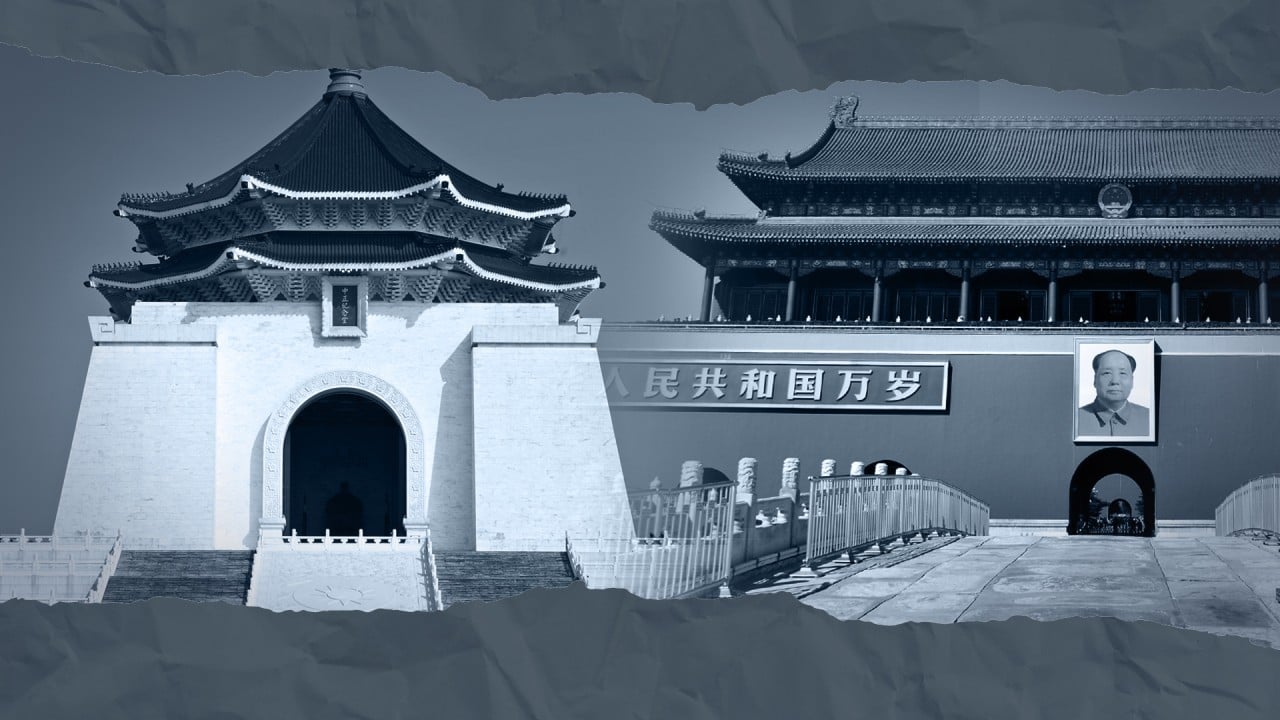
China’s military tracks US warship traversing Taiwan Strait
- Taiwanese authorities say 15 Chinese military aircraft, including a dozen fighter jets, crossed into their defence zone
- Taipei warns Beijing that the island will ‘defend ourselves to the very last day’ if necessary
It came on the same day that Taiwanese authorities said 15 Chinese military aircraft, including a dozen fighter jets, had crossed into their defence zone, and warned Beijing that the island would “defend ourselves to the very last day” if necessary.
“The US move to send warship to sail through the Taiwan Strait and hype it publicly is an old trick to ‘manipulate’ the cross-Strait situation,” Senior Colonel Zhang Chunhui, spokesman for the Chinese People’s Liberation Army (PLA) Eastern Theatre Command, said in a statement. “China is firmly opposed to that.”
A statement from the US military’s Seventh Fleet said the Arleigh Burke-class guided-missile destroyer USS John S. McCain’s transit through the Taiwan Strait “demonstrates the US commitment to a free and open Indo-Pacific”.
“The United States military will continue to fly, sail and operate anywhere international law allows,” the statement said.
Over the last week, Taiwan’s defence ministry has announced Chinese military incursions into its air defence identification zone (ADIZ) on an almost daily basis: one PLA aircraft flew through on Saturday, another on Sunday, 10 on Monday and four more on Tuesday, it said.
Japan to use F-35B fighter jets from 2024 to defend East China Sea islands
“We are willing to defend ourselves without any questions and we will fight the war if we need to fight the war,” Taiwanese Foreign Minister Joseph Wu said on Wednesday. “And if we need to defend ourselves to the very last day, we will defend ourselves to the very last day.”
Addressing the Chinese military aircraft moves on Wednesday, US State Department spokesman Ned Price told reporters that “we have of course taken note with great concern the pattern of ongoing PRC [People’s Republic of China] efforts and attempts to intimidate in the region, including in the context of Taiwan”.
“In support of long-standing US policy, as reflected in the Taiwan Relations Act, [the US] maintains the capacity to resist any resort force or other forms of coercion that would jeopardise the security or the social or economic system of the people on Taiwan,” Price said.
“When it comes to this amassing … we share the concerns of our Philippine allies regarding the continued reported massing of PRC maritime militia near Whitsun Reef, and we have seen the reports that vessels have also spread to other parts of the South China Sea,” he said. “We have reiterated our strong support for the Philippines.”
Bonny Lin, a former US Defence Department official now at the RAND Corporation, said that China’s repeated flights through Taiwan’s air defence zone fit into a pattern of continuing escalation from Beijing, though not yet a dramatic change from before.
“What Chinese strategists have warned already for at least six months if not a year – a major escalatory move from China’s end wouldn’t just be Chinese incursion into Taiwan air space, it would actually be China flying assets over Taiwan, over the main island,” said Lin. “That would be a major step up.”
Japan’s Suga to visit Philippines, India after Biden meeting
The Biden administration has said it is committed to deepening ties with Taipei – a stance that also enjoys broad, bipartisan support in Congress.
Analysts say Taiwan remains a worrisome flashpoint at a time when both Beijing and Washington believe that they are entitled to a leadership role on the global stage, that their political systems are superior and that their governance approach best equipped to deliver benefits to their citizens.
Admiral Philip Davidson, head of the US Indo-Pacific Command, warned Congress last month that President Xi Jinping may be accelerating his plan for an eventual takeover of Taiwan, given Beijing’s recent provocative actions.
But sometimes overlooked, analysts said, is Beijing’s assessment of the cost if it ends up in a direct – and losing – conflict with the US military, including an erosion of domestic support, capital outflow, rising unemployment and a blow to its global reputation.
“You’re seeing undoubtedly an escalation of sabre rattling by Beijing in the Taiwan Straits,” Jude Blanchette, an analyst with the Centre for Strategic and International Studies, said at a CSIS event on Tuesday. “The core focus, though, is, not only does Beijing have the military capability, but what are the domestic political calculations for the Xi administration as they contemplate this.”
US and Japanese leaders may put Taiwan security centre stage
Nor is it likely that outsiders will be able to discern Beijing’s Taiwan timeline, said Ryan Hass, a Brookings Institution fellow and former China, Taiwan and Mongolia director with the National Security Council. “And I think that Beijing has good reasons to want to avoid direct conflict,” he added.
If Beijing did make the drastic choice to use force against Taiwan, said Ali Wyne, a senior analyst at the Eurasia Group, it “would be an extraordinary blunder on Beijing’s part – militarily, economically, and diplomatically”.
Instead, Wyne added, what Beijing likely wants to persuade Taiwan now is that “if and as Taipei grows more diplomatically isolated and militarily vulnerable, Taiwan will increasingly have to negotiate with China on Beijing’s terms”.
US discussions about a possible invasion as tensions grow may be counterproductive and inadvertently help Beijing heap psychological pressure on the Taiwanese people, said Hass, author of the new book Stronger: Adapting America’s China Strategy in an Age of Competitive Interdependence.
He added: “My humble suggestion to our friends in government would be to spend more time talking about, focusing on, areas where we can help Taiwan strengthen itself.”
Additional reporting by Mark Magnier and Robert Delaney



